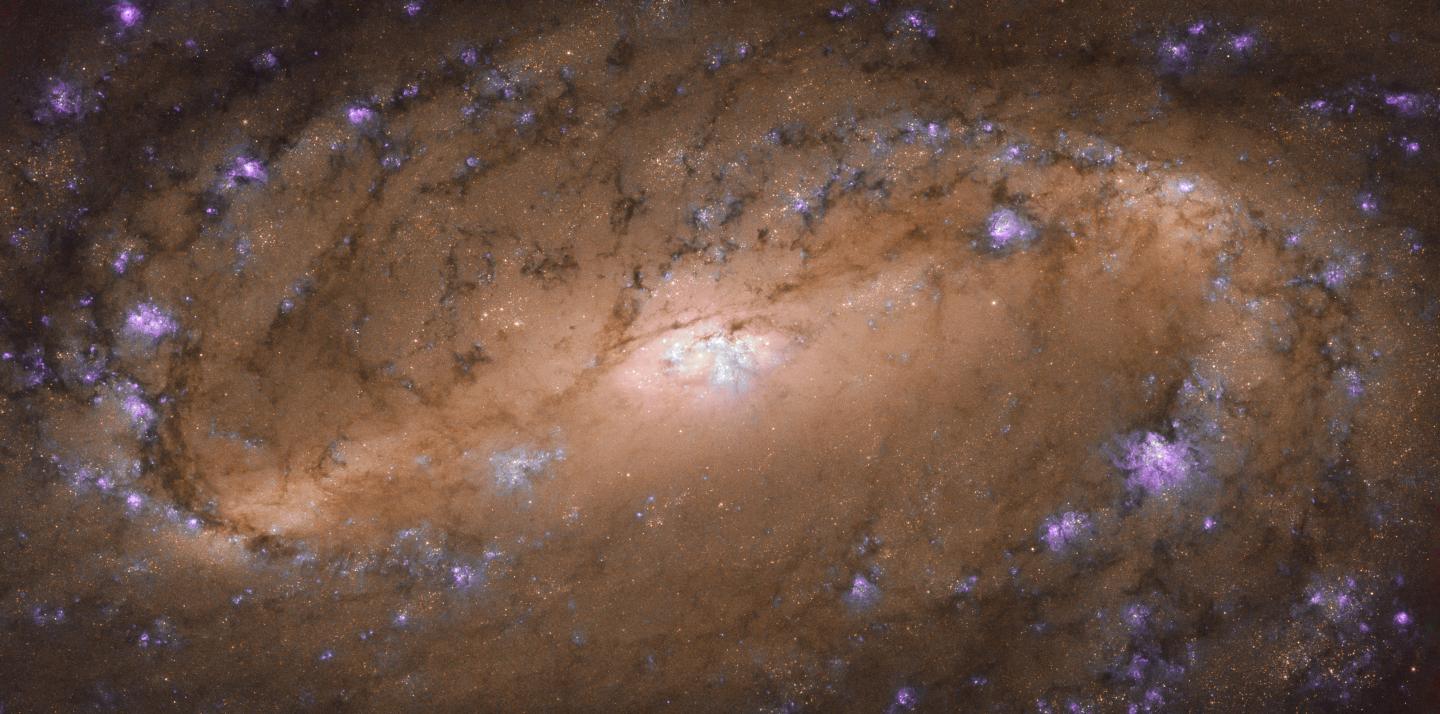
Credit: ESA/Hubble & NASA, L. Ho et al.
Few of the universe’s residents are as iconic as the spiral galaxy. These limelight-hogging celestial objects combine whirling, pinwheeling arms with scatterings of sparkling stars, glowing bursts of gas, and dark, weaving lanes of cosmic dust, creating truly awesome scenes — especially when viewed through a telescope such as the NASA/ESA Hubble Space Telescope. In fact, this image from Hubble frames a perfect spiral specimen: the stunning NGC 2903.
NGC 2903 is located about 30 million light-years away in the constellation of Leo (the Lion), and was studied as part of a Hubble survey of the central regions of roughly 145 nearby disk galaxies. This study aimed to help astronomers better understand the relationship between the black holes that lurk at the cores of galaxies like these, and the rugby-ball-shaped bulge of stars, gas and dust at the galaxy’s center — such as that seen in this image.
###
Media Contact
Claire Andreoli
[email protected]
Original Source
https:/




